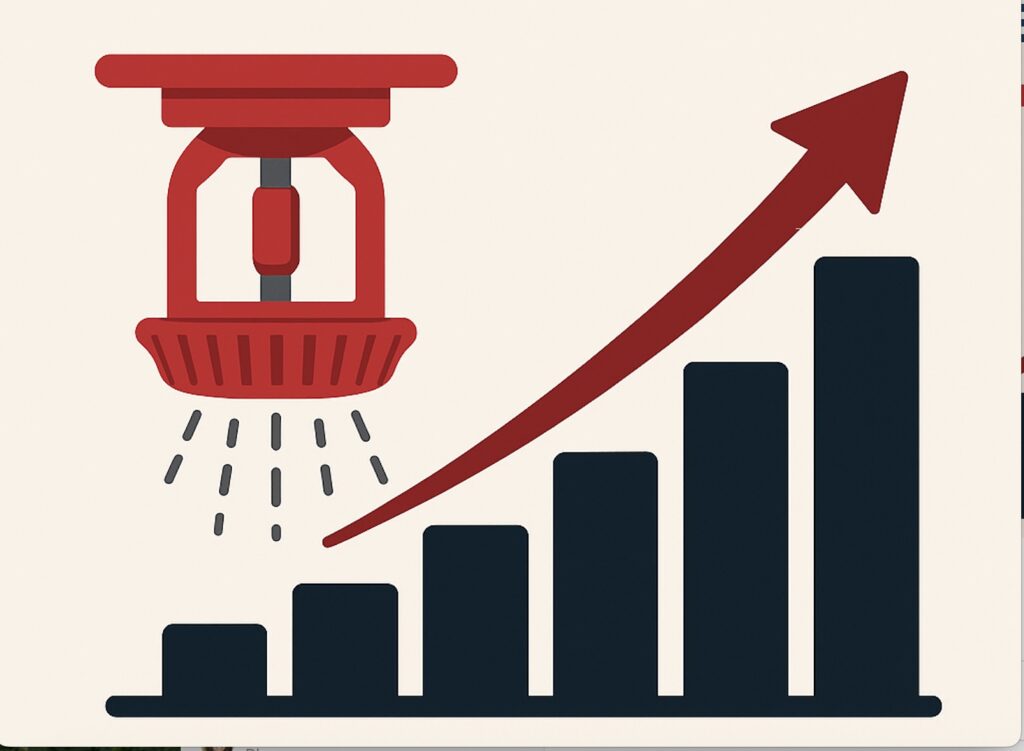Preventive fire system management provides a measurable return on investment by protecting revenue and personnel, extending the life of critical equipment, and lowering long-term insurance and operational costs.
Put simply, a comprehensive maintenance plan for your fire protection systems is the most cost-effective approach to keeping your system functioning properly while avoiding the expensive consequences of neglected maintenance.
How Preventive Fire Protection Saves Money
Maintaining compliance is an effective cost-avoidance strategy that directly impacts your ROI. Preventive maintenance turns fire protection from an unpredictable emergency expense into a more controlled and budgeted investment. When your systems are regularly inspected and serviced, you gain financial advantages that go well beyond safety.
Missed inspections or incomplete service records can result in fines, shutdown orders, denied insurance claims, or various legal consequences. A few ways that preventative maintenance can save business’ money long-term include:
- Reduced downtime: A fully functioning fire protection system contains fires quickly and decreases risk for operational disruptions.
- Lower insurance risk and claim protection: A maintained system reduces underwriting risk, helps support claim approval, and may even qualify a building for reduced premiums.
- Longer equipment life cycle: Preventive maintenance extends the life of sprinklers, fire alarms, suppression systems, and exit/emergency lighting.
- Protection of high-value assets: System failure in sensitive environments leads not just to structural damage, but also data loss, downtime, and more.
5 Ways to Maintain a Fire Protection System to Protect ROI
A fire protection system only delivers financial and operational benefits if it’s working as intended, and that depends on consistent inspections and maintenance. Neglecting even one part of the system can create a system-wide failure.
Consider these key practices that can help facilities protect equipment, people, and long-term operating costs.
- Follow NFPA-required inspections and testing schedules
Every fire protection system has its own inspection and testing requirements based on NFPA codes. These inspections are not just required by law; they are also critical in identifying early signs of system failure. By following the correct schedule, you can proactively protect both compliance and system performance.
Examples of inspections and testing schedules per the NFPA include:
- Sprinkler systems require monthly, quarterly, and annual inspections
- Fire alarms require annual and semi-annual testing
- Clean agent systems require semi-annual maintenance and inspections
- Fire extinguishers require annual inspections and 6–12 year testing and maintenance
- Repair deficiencies before they become failures
A fire system with unaddressed deficiencies may not be operational, or reliable. During inspections, fire protection professionals can identify deficiencies and issues right away, giving you time to make repairs. Correcting deficiencies quickly is much cheaper than paying for emergency repairs after system failure.
- Maintain documentation for insurance and AHJ compliance
Inspection records and repair documentation are financial assets. Without them, insurance companies may deny fire-related claims or reduce payouts. It’s critical that you keep and maintain these records.
Digital reporting through a dedicated fire protection company makes it easier to maintain proof of compliance to avoid citations, fines, or other potential legal issues.
- Track system age and plan for replacement costs
Even well-maintained fire protection systems have a life cycle. Replacing aging components of your system proactively prevents failure during a fire emergency. Having a plan for replacement costs is helpful for managing your budget. Since each system has varying life spans, consider long-term planning benchmarks to help you budget ahead avoid surprise expenses as your facility ages.
Examples of planning benchmarks include:
- Sprinkler systems: 50+ years with proper maintenance
- Fire alarm systems: 15–20 years
- Emergency/exit lighting batteries: 3–5 years
- Use one certified provider for all fire protection systems
Working with multiple vendors can lead to gaps in service, inconsistent documentation, and higher cost. Consolidating services under one full-service provider results in better reporting, faster deficiency repair, and lower total costs.
A full-service fire protection provider, such as Fire Systems, can inspect, repair, track, and maintain all systems under one schedule:
- Sprinklers
- Fire alarms (monitoring as well)
- Suppression systems
- Extinguishers
- Fire pumps
- Emergency/exit lighting
- Heavy equipment fire protection systems
Fire Systems
Fire Systems provides full installation, inspection, maintenance, and repair of all fire protection systems across the Southeast. Contact Fire Systems at 770-333-7979 or visit our website for more information on how we can help you save time and money while maintaining safety and compliance.

